If the science fiction I read is any guide, the solution to any problem is: violence! Whatever the context—first contact, zombie outbreak, meteor impact, or a stalled escalator—there’s nothing like clawing one’s way to survival over a heap of bodies.
Indeed, the violent solution is so expected that readers can be surprised by a plot that avoids it…
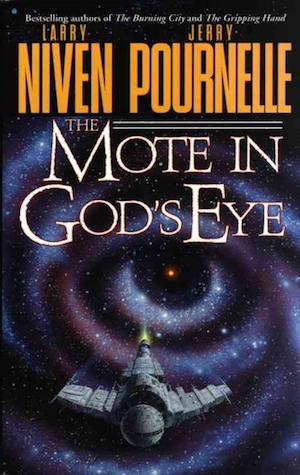
Consider the venerable The Mote in God’s Eye. (So old that we don’t need to avoid spoilers, right?) It was an unexpected plot twist that the Empire of Man, though capable of turning whole worlds into parking lots, didn’t incinerate the dangerous alien Moties. The Empire settled for a solution (well, perhaps “response” is more apt)… a response that kicked the can down the road in the hope that a non-genocidal solution might be found.
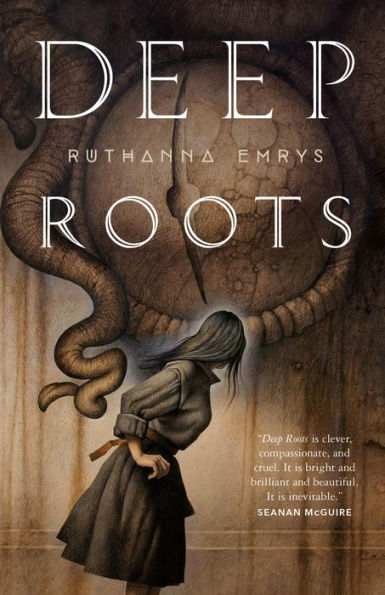
In Ruthanna Emrys’ Deep Roots—the second work in her Innsmouth Legacy series, following Winter Tide—it’s the aliens who save the day, or at least try to do so. Protagonist Aphra Marsh is almost the last of her kind thanks to U.S. government persecution (violence = solution), when benevolent aliens intervene. It may not work out as planned, but they meant well.
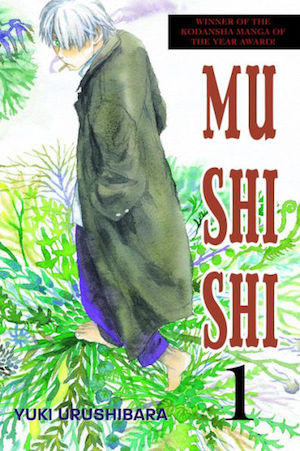
Yuki Urushibara’s manga Mushishi posits an Earth on which the familiar kingdoms of life (plants, animals, and fungi) share the world with the protean mushi. Most humans cannot see mushi, but mushi’s effects on the world can be all too apparent. Ginko is one of the lucky few who can perceive mushi, which has landed him with the task of dealing with them on behalf of his species. Since the mushi’s activities can be lethal to humans, it would have been easy for the author to turn Ginko into a supernatural exterminator. Instead, Ginko prefers comprehension and informed co-existence.
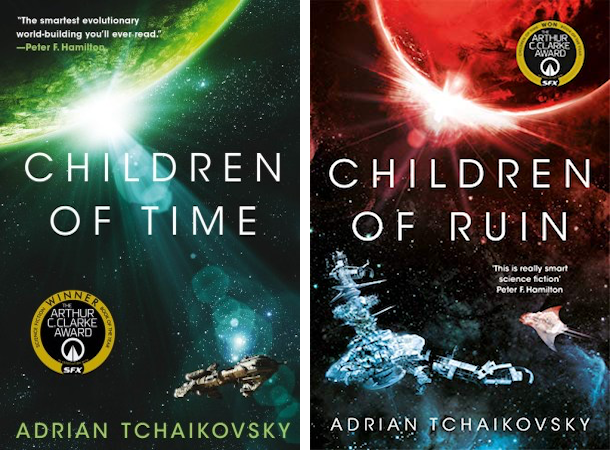
Adrian Tchaikovsky’s Children of Time series—Children of Time and Children of Ruin—features not just one but two terraforming projects whose end results are worlds populated by entities seemingly designed to trigger human phobias. The planet of the intelligent spiders featured in Time is bad enough.1 Ruin offers not just a civilization of anarchistic octopuses, but true aliens straight out of Who Goes There? One might expect resolutions featuring an abundance of nuclear weapons or a well-aimed asteroid, perhaps. Tchaikovsky’s cast make entirely different decisions.
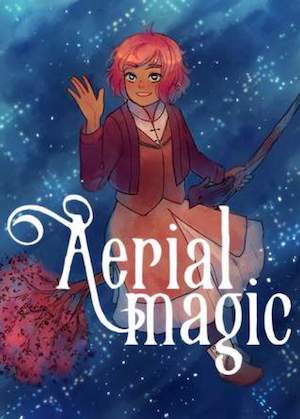
Ari Walkingnorth’s Aerial Magic is secondary world fantasy (whereas her earlier Always Human was near-future SF). Aerial Magic’s protagonist, Wisteria, is (like a lot of fantasy protagonists) a person with a respectable talent for magic, and one grand impediment that lies between them and success. The problem is not, as one might very reasonably expect, some noseless revenant or a would-be overlord determined to kill Wisteria, nor the prospect of a foreign army marching through the streets of Vecrum. Instead, word-blind Wisteria is wrestling with a prospect with which she has little personal experience and for which she has no relevant skills: the possibility of success.
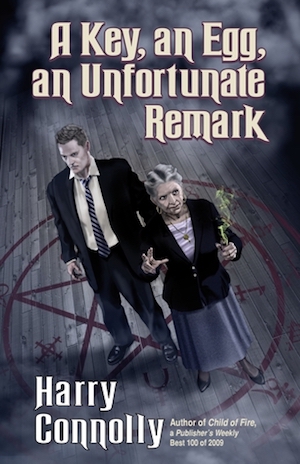
Those of you familiar with Harry Connolly’s 20 Palaces books, a series entirely comfortable with violent solutions, may find his A Key, an Egg, an Unfortunate Remark an interesting change of pace. Protagonist Marley is an older woman who has specialized in solving vexing extra-legal problems (such as ghosts, vampires, werewolves). In the past she exorcised, staked, and shot her way to a solution. Of late she prefers to use persuasion, applied psychology, and money. These tools may be just what she needs to handle her latest problem: a real-estate developer.
I am always looking for more books in this sub-sub-sub-genre, so if you know of any examples not mentioned above, please mention them in comments.
Originally published in August 2019.
In the words of Wikipedia editor TexasAndroid, prolific book reviewer and perennial Darwin Award nominee James Davis Nicoll is of “questionable notability.” His work has appeared in Publishers Weekly and Romantic Times as well as on his own websites, James Nicoll Reviews and Young People Read Old SFF (where he is assisted by editor Karen Lofstrom and web person Adrienne L. Travis). He was a finalist for the 2019 Best Fan Writer Hugo Award, and is surprisingly flammable.
[1]If you are an arachnophobe, do not reflect on the fact that each square kilometer on Earth has about a million spiders on it.











Anne McCaffrey’s “Dragonriders of Pern” books have very little interpersonal violence, since the principal conflicts are “man versus nature” — Threadfall and flu epidemics. You can fight Thread with flame, but not with fists or harsh words. There’s a lot of disagreement in the narratives, but most of it is mano-a-mano rather than state-on-state, and it’s generally resolved by words or antagonists conveniently hoist on their own petards.
Conventional violence-wise, there’s the off-screen armed takeover by Fax the Usurper (when the series-to-be was just one story, and still dominated by fantasy tropes), the barely-seen Holder march upon Benden Weyr that’s defused by young Weyrwoman Lessa riding Ramoth, disagreement between Weyrleader F’lar and an Oldtimer ended by a knife fight, and armed bands of desperate Holdless in Renegades of Pern.
Actually, most of McCaffrey’s series (Crystal Singer, Talents, The Ship Who, etc.) are low on violence. IIRC, the most overt armed conflict is in The City Who Fought (with S.M. Stirling).
The Lilith’s Brood series by Octavia Butler, although opinions may differ on the extent the Oankali are really nonviolent… I’m starting the third book and I’m still conflicted about it and about them.
I think of Asimov’s Foundation – “Violence is that last refuge of the incompetent.” And the answer, of course, is obvious.
Earthsea.
Everything written by Becky Chambers.
Most of Arthur C Clarke’s work is nonviolent. Offhand I can’t think of any major wars, or even battles, in any of his stories. Other than Glide Path, which is set during a war, but has no violence in it.
Clarke’s “Superiority” details the visionary R&D programs one side deploys in war time.
The Mote in God’s Eye does begin in the aftermath of a violent solution (rebel planet gets bombed back to the stone age, more or less), and contains other violence (some characters die in a fight with the aliens)
As I remember the solution to the “Motie problem” was that there’s only one faster-than-light way out of the Motie system, so the Empire is going to shoot anything that goes through it – i.e. the Thermopylae approach. That will work until the Moties find the goat trail over the hill.
I was very skeptical when I read your claim in the footnote that “each square kilometer on Earth has about a million spiders on it” as this would average to one spider per square meter no matter where on Earth!
So I looked it up and you were indeed wrong, James.
But not in the way I thought. Turns out that the number floating around is one million spiders per acre. This number goes back to the 1973 paper “Ecology of the True Spiders” by A. L. Turnbull that estimated the average global spider density to be 131 spiders per m². (That converts to “only” 530k spider per acre so the one million is a bit off but still.)
Frankly, I can’t wrap my head around this number. 131 spiders/m² globally! Jaw-dropping.
Huh. My estimate for how often I accidentally eat spiders in my sleep needs to be adjusted _way_ up.
Lois McMaster Bujold’s Vorkosigan series (can you tell she’s one of my favorite authors?). She’s won 7 Hugo awards and been nominated for 16.
Miles Vorkosigan, the “differently-abled” main protagonist, usually out-thinks his opponents, sometimes to a win-win conclusion. There are exceptions, though, so if you have a zero-tolerance policy for a violent solution, or violence in general, this may not be a fit for you. However, Bujold approaches violence with a deep well of skepticism, and humanity with, well, a great deal of humanity, so there are compensations to be had.
Bujold’s 5-Gods Universe series is also fabulous and could be described in like terms.
Superhero comics I suppose are kinda science fiction so maybe this counts. In Mark Millar’s run on The Authority, he had the aforementioned super team taking on Jacob Krigstein, a mash-up of comics legend Jack Kirby with a mad scientist. The mad scientist had been mostly defeated and screamed that he would just make more super-powered minions to fight them or die trying. It looked like the most bloodthirsty superhero team of all time would take option two when one of their number proposed a third option to Krigstein – come work with them to create a future for the Earth that didn’t involve being a slave to special interests.
Sadly, that idea went to Mandyville with Millar leaving the series not long after. Would have liked them to explore that one more.
The sequel to A Mote in God’s Eye, The Gripping Hand, while it has its share of chases and space battles, has an even more non-violent conclusion, where issues are addressed with (SPOILER ALERT) negotiation and medical breakthroughs.
Well, leaving aside those works with lots of violence but where this is incidental to the actual solution (even Heinlein could manage this), there’s a great body of work where there is no solution at all. Ballard’s protagonists, for example, often don’t need no stinkin’ solution, violent or otherwise, they’re quietly adapting to their collapsing world. (In fact, this is quite a trope for the British 1960s New Wave, Aldiss loves a bit of it too…) Then there’s We’re All Doomed Whatever We Do, thinking of John Brunner here.
But there’s also the other solution, if we must have one – Let’s All Just Run Away. (I’d go with that one as default in real life, think most people would.) John Wyndham tends this way, just escape to the Isle of Wight and you’re sorted (only good for triffids, though, I found it didn’t help much with Covid-19).
Oh, on the original theme, I don’t recall Clifford Simak and Hal Clement favouring violent solutions much, but haven’t read either for ages…
Theodore Sturgeon’s The Skills of Xanadu features an explorer from an aggressively imperial culture. He is determined to learn or steal the unity of purpose among the natives of Xanadu.
In the end Xanadu conquers the would-be conquerors with—a belt.
http://fennetic.net/irc/Theodore_Sturgeon_-_The_Skills_of_Xanadu.pdf
“The supreme art of war is to subdue the enemy without fighting.”
Sun Tzu, The Art of War
Pournelle’s Empire was a cliched setting even back in 1974, but one interesting aspect of it was the priest saying the Church would forbid any member from taking part in the extermination of the Moties.
I enjoy the fantasy manga Flying Witch and it is absolutely violence free. It’s just a comfy, episodic ride in a rural setting where everyone is nice to each other and enjoys a peaceful life (plus it’s style of humor is right up my alley.) I’ll have to give the Mushishi manga a look since you recommended it here.
Ascendance of a Bookworm is another Japanese fantasy series that is mostly violence free. The main character is so focused on trying to reinvent books that there’s just not a lot of room for other problems. Most of the other problems have economic or political solutions, but there are a few spots of violence.
“A Door into Ocean” by Joan Slonczewski. A classic of feminist science fiction, it features a pacifistic race of amphibian humanoid aliens called Sharers who live on a ocean planet (alright, actually a moon, not a planet) and have no concept of violence and one-sided aggression, and one day a human empire invades their moon and the Sharers respond….still with no violence, but by recruiting humans from other planets to their world and their life style.
Well, at least in the part where I am currently reading (chapter 5 of the Part II) the Sharers resorted still to no violence.
Jo Walton’s Or What You Will
Though I cannot recommend all of James P. Hogan’s books, he often explores different non-violent solutions. The Giants series and the Code of the Lifemaker and its sequel are particularly intriguing, and sometimes hilarious.
I love Mushishi! It also has an anime. And Natsume’s Book of Friends. In fact, most slice-of-life genre manga are peaceful and non-violent. Also, one of my favourite tropes is when an enemy becomes a good friend.
Just read “A Key, an Egg” based on this review, and it was really quite good. Among other things, author Connolly comes up with a new twist on vampirism — which I didn’t think was possible at this late date — and a clever way of breaking the fourth wall. Recommended for fans of urban fantasy and/or extremely competent old ladies.
Doug M.
The Martian
There is The Martian, and other tales where the challenges of exploration or survival provides the action.
@24: “Recommended for fans of urban fantasy and/or extremely competent old ladies.”
Recommend for E.C.O.L’s or fans of E.C.O.L’s? Now, I guess I have to read it…
Rather surprised no one has mentioned Asimov’s Foundation or Robots series. (Has he been cancelled while I wasn’t looking?) While there is violence in both, the main characters consistently strive for non-violent solutions. This was one of the reasons he was my go-to author in my days of youth so many years ago.
@28 – look back at @3 for the first reference. It was the first thing I thought of on this topic.
“The supreme art of war is to subdue the enemy without fighting.”
@17 That is non-violent only in the sense that Hitlers invasions of Austria and Czechoslovakia, and Stalins invasions of the Baltic States, were non-violent. Or that a mugging is non-violent if you hand over your wallet before you are shot or stabbed.
Two mid-1970’s Brunner works, The Stone That Never Came Down and The Shockwave Rider, feature non-violent solutions. Stone is an edge case: the solution is a substance that (very roughly) makes ignorance difficult, but it’s something that has to be slipped into food, drink, air, …. Rider‘s protagonist, OTOH, is a brain who got away from a government training/indoctrination ~school, and strikes back against a criminal government by exposing the information they’ve been hiding.
Miracle-drug stories are scattered through old SF. Knight’s Rule Golden involves a substance that makes people feel the pain of any violence they commit; the CV trilogy assumes an infection that leaves the world a much saner place.
I suspect there are a lot of Sturgeon examples besides the one above; the one that occurred to me was “Unite and Conquer”, which is the decades-prior non-violent version of the Watchmen solution: Earth, faced with what seems like an invulnerable alien ship (that doesn’t retaliate even when shot at) decides unity works better than quarreling. On a different slant, “Granny Won’t Knit” peacefully upsets a stagnant society by sneakily introducing more effective teleportation.
wiredog #6: Clarke has a space battle culminating Earthlight, though it is admittedly a minor/lesser-known novel and, more significantly, an example of a carnage so shocking that it makes both sides back off and come to the negotiating table. There was also some background saber-rattling in the Rama – remember the crewmember defusing the Mercurian rocket? And a threat of war hang over The Imperial Earth. Oh, and of course those (widely proliferated) nuclear missiles launched at the end of 2001, but made harmless by the divine providence Starchild. Not to mention the interstellar exterminators of “Crusade”. Ohh, and the wonderful “Hide and Seek”, taking place in “the Second Jovian War”! No, Clarke wasn’t quite so (naively?) nonviolent.
As for the initial question, I may have mentioned elsewhere how I like The Last Dancer by Daniel Keys Moran increasingly on each re-read. Without spoiling too much, there is a lot of violence (it may even be the whole point of the novel), but at the last moment, quite unexpectedly for the genre/cover/ reader expectations, the heroes or at least a key one of them realizes there are some things you just don’t do if you want to look in the mirror, and acts accordingly, even accepting the personal consequences. (James, I would love to read your review.)
Jens #10 Wow; my hat off to you.
Vonda N. McIntyre’s book, Dreamsnake
The majority of Victoria Goddard’s books, I recommend The Hands of the Emperor in particular. Almost all of Ursula K. LeGuin’s books, as someone else pointed out above. Katherine Addison’s The Goblin Emperor.
Solutions in the Innsmouth Legacy are kind of temporary overall. If I wish hard enough can we get a third book? Seriously, I was just thinking yesterday how I’m going to spend the rest of my life wondering how Specter made it through McCarthyism given the situation at the end of Deep Roots.
No one has mentioned Spider Robinson yet?
Have you all forgotten the Sector General series by James White? A series of hard science fiction books set on a space station-sized intergalactic hospital, complete with an ambulance that specialized in answering emergency calls from completely unknown species. Violence was always an impediment to solving the problem, never the solution. The closest they ever got to violence was trying to figure out if the unknown alien creature running amok in the corridors was a befuddled sentient being or a traumatized pet.
James White lived and wrote in Belfast during “The Troubles”, and wrote stories designed to be an antidote for the violence he saw around him. I highly recommend them.
Greg Egan’s books are mostly non-violent though there is at least a little violence in some of them.
I don’t remember any in Diaspora which features both the best Genesis and the best Alien I’ve ever read (by a long way in both cases).
“1: If you are an arachnophobe, do not reflect on the fact that each square kilometre on Earth has about a million spiders on it.”
This is untrue.
Even assuming that that’s the correct average number of spiders per sq km, it’s an entirely different claim to say that that applies to *each* square kilometre
The City Not Long After by Pat Murphy has some background violence, but also significant Gandhi/MLK stuff.